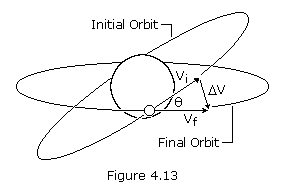Originally Posted by
Ascend Charlie
The force isn't an instant thing. It starts from zero, builds to a max upwards, then transitions to a max downwards, and back again - a force of some kind is always there, up and down.
Yes, this is true in a rotor. It's constantly transitioning through 1 sinusoidal cycle of force per rev, and not instant.
You've been contending that a continuous force is required for the path to continue diverging over the course of 90 degrees from the original path (what would have been without the force.) And, an instant-force situation shows that there is no such requirement, since the same divergence would happen. If it's not required in the instant-force case, why would it be required in any case? How does it fit in as an explanation, for a motion that happens just as merrily with or without it?
I also keep trying to bring up the instant-force case since it's the simpler setup, and any time like this it's crucial that the simple setup be understood and agreed on first before complications are added on top. If there's error and confusion on the ground floor, nothing meaningful can be said if you add more pieces on top of that.
It takes only one moment to deflect the flight path, and from then on, with no more normal force, that deflected path continues to diverge for 90 degrees, and then starts coming back. (This is like a spacecraft doing a plane change, or this piece of spinning cardboard, 6:30 into this video:
)

Once this is understood, then you can modify it to considering a wave of force peaking at the 0 degree point, instead of an instant impulse there. And just like the instant impulse that had its effect 90 degrees later, the wave does too. The max force peaks 90 degrees later. The slightly reduced force on either side of the peak at -10 and +10 degrees, is displaced to 80 and 100, etc. (this is like a classic toy gyro where tilting the axis applies the appropriate normal forces all the way around... or a helicopter rotor with an imaginary simple ball pivot in the middle)
Can you explain, then, why an R22 only needs 72 degrees of advance?
Not specifically. But like I said before, everything I've been saying is perfectly compatible with complications in the hub design adding more forces to those described above, that modify the basic behavior. The question for you, if you're contending that there is no gyroscopic behavior in the mix, is twofold: first, how is it that this rotating body is
not subject to the forces/behaviors (among others) that all other rotating bodies are? What is the basis for this interruption in physical law? And second, if we grant this disappearance of the normal force and deflection, what are the forces that
do cause the deflection we see, and which looks suspiciously like one that disappeared?
If it was a gyroscope, it has to be 90 degrees flat.
Why are you having such a resistance to the concept of multiple superimposed effects?